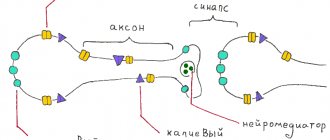Finding motivation to quit smoking
Motivation is the most effective and correct solution that allows you to achieve a positive result in absolutely any business.
The fight against smoking is no exception. Before fighting a bad habit, every smoker must decide on a key motivation that will shine as a guiding star throughout his difficult journey. It is very important for health to quit smoking; the pros and cons of this struggle will be discussed further.
The main motivating postulates include the following positive advantages of living without smoking:
Increase in life expectancy by an average of 10 years
Harmful substances contained in tobacco products have a negative impact on human health. Numerous studies indicate that the life of a smoker is on average 10 years shorter than that of a non-smoker.
Did you really think you were smoking tobacco?
Harmful substances contained in tobacco products
If a person has been abusing nicotine for more than 20 years, then there is a high probability that he is at risk for chronic obstructive pulmonary disease (COPD). This can be easily verified using IR.
IC is a smoker’s index, which can be calculated using the formula:
IR = KS*SK/20
Where:
- IR smoker index;
- KS is the number of cigarettes a person smokes in 24 hours;
- SK - smoking experience (in years);
- If IC > 10, then the person is at high risk of developing COPD.
- Fresh and healthy appearance
- Appearance of a smoker
- Improving intimate life
- Good and healthy sleep
- Reducing the risk of heart attack or psoriasis
- Financial savings
- Caring for loved ones and loved ones
- Improving quality of life
- Life is Beautiful
Smoking has a negative impact on a person's appearance.
Smoking has a negative impact on a person's appearance. The addiction causes a decrease in the level of oxygen in the blood, and the presence of nicotine blocks the production of collagen, as a result of which the skin becomes flabby and dull, and wrinkles are 5-6 times more noticeable. Due to oxygen deficiency, hair looks weakened and begins to fall out. The teeth acquire an unpleasant yellow tint, which over time turns into tartar.
Sex and smoking are completely incompatible concepts. The results of the study on this issue indicate that some smokers are dissatisfied with their intimate life. Men who are not addicted to smoking can have sex longer, and the sensations during sexual intercourse are brighter and more intense. The risk of developing impotence in a smoking man is 60 times higher.
Insomnia is often the “friend” of a smoker. Nicotine forces the heart to work harder, causing an increase in blood pressure, and this, thereby, prevents you from sleeping soundly and getting proper rest. People whose smoking experience exceeds 10-15 years may wake up on purpose in the middle of the night just to quench their body’s thirst for nicotine.
Smoking is one of the main enemies of the cardiovascular system. When you inhale smoke, vasoconstriction occurs in the body, which leads to a deterioration in blood supply. In addition, smoking leads to the formation of blood clots. Taking a drag on a cigarette, a person provokes the release of adrenaline into the blood, and therefore, active contraction of the muscular walls of the arteries begins, an increase in pressure and an increase in heart rate.
The immune system also suffers. Therefore, there is a high risk of developing psoriasis.
Diseases caused by smoking
It is not at all difficult to calculate how much money a smoker spends on packs of cigarettes per month. If the cost of one pack is on average 70 rubles, and a person smokes 1 pack per day, then the annual consumption is 25,200 rubles. It turns out that smokers themselves pay for the appearance of diseases.
Close people of a smoker are always at risk. Being passive smokers, they are exposed to inhaled cigarette smoke. At the same time, they receive no less harm. Therefore, when quitting smoking, a person takes care not only of himself, but also of loved ones.
Non-smokers perceive the world around them much better and more clearly. “How can I quit smoking if cigarettes calm me down? “Many nicotine addicts think this way. Cigarettes, which are often given the role of sedatives for stress, do not solve problems with it, but, on the contrary, only aggravate them.
Non-smokers perceive the world around them much better and more clearly.
Starting to work on himself and his habits, each person finds his own individual incentive to quit smoking, thanks to which he can move forward to victory. Therefore, the choice of driving force must be conscious and thoughtful.
What are the disadvantages of the fight against smoking? There is none of them. The temporary test of willpower may dampen the mood a little, but the results are worth the patience.
Bullfight
This smoking cessation pill reduces cravings for cigarettes and helps you quit tobacco faster. If a person quits smoking with the support of such tools, they should always be carried with them. Corrida tablets contain oat extract, which calms the nervous system and has a positive effect on the gastrointestinal tract. Glycine improves metabolic processes in the body. Pueraria lobata relieves inflammation and improves memory. This smoking cessation product contains the most competent selection of components. “Bullfighting” improves the functioning of the cardiovascular system, gives vigor and improves the condition of the lungs, neutralizing damage. Thanks to its completely natural composition, Corrida increases resistance to stress and improves immunity. When taken regularly, these smoking cessation pills reduce appetite, which usually increases sharply when a person quits smoking.
Bullfight
Evalar, Russia
The dietary supplement Corrida Plus Evalar helps reduce the craving for smoking and quit tobacco, the only herbal preparation with a preventive and healing effect, helping to quit smoking without gaining weight and restoring lung tissue.
When taking the product, tobacco smoke causes disgust, due to this the craving for smoking is suppressed. from 197
432
- Like
- Write a review
Choosing a way to stop smoking
After finding the necessary motivation to fight smoking, you need to effectively choose the period during which you will quit your addiction. Each person must decide for himself whether he will quit smoking gradually or abruptly.
Abrupt smoking cessation
Smokers whose history of addiction does not exceed 5-8 years can try to quit smoking abruptly. Nicotine addiction is formed at the physical level, but in a short period of time it cannot take root, and therefore “newbies” will not be tormented by painful symptoms associated with quitting smoking. Only psychological cravings will have to be worked on intensively.
A sharp refusal requires a demonstration of strong will. Under no circumstances should you break down, since even half a cigarette will return the smoker to his previous course, and it will be almost impossible to overcome the habit in the near future.
Anyone who quit smoking will notice a positive trend in their well-being within 10-14 days.
Gradual cessation of smoking
A gradual cessation of smoking is perfect for those who have a long history of nicotine addiction. The body, which is accustomed to the fact that nicotine enters it every day, needs some adaptation period. It is necessary so that the functioning of internal organs is gradually improved without the participation of nicotine additives.
A gradual fight against tobacco smoking must be carried out in several stages:
In the beginning, you need to switch from heavy cigarettes to lighter ones. But in this case, you must definitely set a daily norm for yourself, and in no case go beyond what is permitted. Gradually, the body will begin to get used to moderate doses of nicotine, and after 2 weeks it will be possible to move on to the second stage of the fight.
The second step in the fight against smoking is to reduce the amount of smoke you consume. The first mark must be made on cigarettes. To do this, you need to divide the cigarette into 3 parts by eye. On each smoke break you can only “consume” 2 parts of a cigarette. You should not smoke more than the mark allows. After a couple of weeks, you can put a mark on half of the cigarette. You must adhere to these conditions for another 14 days.
The third stage is devoted to reducing the number of cigarettes smoked. Every day for every 7-10 days you need to reduce your cigarette consumption by 1 piece. The smoker endures the first weeks more comfortably, but when it comes to the realization that the number of cigarettes consumed has decreased by half, great panic and a desire to break the rule may arise. Under no circumstances should you succumb to this temptation. After 2-3 months, you can learn to be content with just two cigarettes every 24 hours, which are smoked only up to ½ length.
The final stage of the fight against nicotine addiction is characterized by consuming only 1 cigarette over 24 hours. The smoker will already begin to realize that the struggle is almost over, and in it he remains the winner.
The first 14 days without cigarettes
The body's response to quitting smoking is most intense in the first two weeks after quitting tobacco. All symptoms that appear at this time are a consequence of the so-called nicotine fasting: the body is cleansed of nicotine, but the processes in which nicotine participated have not yet been rebuilt.
We will describe in detail, day by day, below the emotional and physical manifestations that will accompany quitting smoking, and the changes in the body at this time.
Then the symptoms will no longer change daily. A former smoker gets used to the normal state, and the changes will not be as bright and noticeable as in the first days. Therefore, further we will describe the consequences of quitting nicotine on a monthly basis.
First day
At the beginning of the journey, a person who is trying to quit a bad habit feels an emotional uplift, is determined to get rid of the addiction and is confident in future success. Against this background, the craving for nicotine is absent or easily blocked by willpower and distraction by other things.
The carbon monoxide content in the blood gradually decreases and, on the contrary, the oxygen content increases. A person feels that it has become easier to breathe; an excess of oxygen can even cause slight dizziness. For many experienced smokers, this ease of breathing becomes a revelation.
Some experience a decrease in appetite, weakness, and slight anxiety. You may have difficulty falling asleep or have trouble staying asleep.
Quite often it is recommended to keep a diary to record all stages of the addiction recovery process.
Second day
Symptoms of nicotine starvation begin. A severe cough and shortness of breath appear.
The ciliated epithelium of the lungs begins to restore its functions. Sputum production is reduced. The inflamed intestinal mucosa begins to regenerate. Appetite decreases, and mild abdominal pain may occur. There may be an increased urge to urinate.
There is almost no change in the psychological state. The person is still on the rise, but slight irritability appears, which is quite easy to suppress with an effort of will. Self-hypnosis techniques help, constant reminders to yourself why the decision was made to quit (recovery).
Sleep is often restless; nervousness and obsessive thoughts can cause problems falling asleep. You may feel drowsy during the day.
The third day
The tone of blood vessels increases, blood supply to the heart and brain improves. Regeneration of the bronchial mucosa begins, normalization of the pancreas.
The physical craving for cigarettes decreases slightly. While these changes are invisible, they occur at the cellular level.
The skin becomes dry, begins to peel, and small pimples (dry) may form.
Appetite increases, cravings for sweets appear (or intensify). Heartburn may bother you.
Some people experience tinnitus, dizziness, and a feeling that their heart is “squeezing.” Symptoms of psychological dependence intensify. A former smoker becomes more and more nervous, it is difficult for him to concentrate on anything, his thoughts always return to the cigarette.
Fourth
By this time, dizziness usually goes away, and the blood supply to the brain normalizes. But I still have concerns about tinnitus and surges in blood pressure. The face and fingers may swell.
Cough continues; Often a person has the feeling that there is a viscous mucous lump in the throat - the latter means that a restructuring of the system for producing bronchial secretions is taking place in the bronchi.
Emotionally, aggressiveness decreases and depression goes away. Many patients at this stage say that they expected more serious manifestations of nicotine withdrawal.
The sleep is still disturbing and superficial. Increased appetite and cravings for certain foods persist.
Fifth
Regeneration of the respiratory system continues, normalization of the functionality of the bronchi and lungs. But you still feel a lump in your throat, and dark mucus may come out when you cough
By this time, little remains of the emotional high of the first day. There is a risk of breakdown, which is further facilitated by deteriorating health. It is important to remember that all quitters experience this, and many quite successfully.
Small microcracks begin to disappear from the surface of the tongue. The perception of taste is restored.
Sixth
The functioning of the stomach and pancreas continues to normalize. Increased thirst often appears, and with it frequent urination. Some people experience bitterness in the mouth and painful sensations in the liver area. Appetite is reduced.
Many people note sweating, dry mouth, trembling hands, and nausea during this period.
Those who quit smoking become nervous, aggressive, and sometimes whiny. Every little thing causes an emotional reaction, and self-control decreases. You can consult your doctor and start taking anti-anxiety medications.
Seventh
The body is rebuilding to work without nicotine, although mucus continues to be released when coughing, and the feeling of a lump in the throat has not yet gone away. There may be occasional bowel movements. Fatty foods are poorly accepted (heartburn may occur), but overall appetite increases. The skin remains dry and flaky.
“Cigarette syndrome” and other provoking situations.
Tenth
Internal motivation is falling, so now those who quit smoking really need the support and encouragement of loved ones and those around them. A person can hardly tolerate people smoking nearby.
The restoration of the immune system begins. The cough continues. If light yellow or gray clots come out during a cough, you should definitely contact an otolaryngologist. A cough can be softened with a warm drink.
Eleventh
More oxygen enters the body, which can cause dizziness, trembling of fingers, and headaches.
Emotional sensitivity, temper, or vulnerability for any reason persists.
There is a desire to test yourself by smoking “just one cigarette” and remember its taste. At the same time, the smell of tobacco smoke is disgusting.
Appetite is still increased.
Twelfth
The condition of the skin improves, largely due to the normalization of blood circulation. A healthy complexion returns.
The cough softens, and chronic inflammation in the lungs gradually disappears. Intestinal functions are restored.
The neuropsychic state has not yet improved, which means that the person still greatly needs the support of loved ones.
Thirteenth
Malaise of uncertain localization may occur, a feeling of heaviness in the back of the head, and weakness may appear. There are surges in blood pressure.
Usually during this period a person strives to reach the two-week mark, so the risk of relapse is not very high - the desire to take a cigarette is suppressed by this desire.
Fourteenth
The cough begins to subside, the complexion continues to improve, and the yellow coloring of the fingers goes away. Vegetative-vascular disorders may still be present - lethargy, drowsiness, weakness.
Two weeks is the first serious milestone, and it is psychologically important not to break down on this day. A common mistake is to assume that one cigarette after 14 days of abstinence will not harm. In fact, it can derail the entire smoking cessation process.
To give up smoking
To quit smoking, you first need to alternate days of smoking with days of quitting cigarettes.
To quit smoking, you first need to alternate days of smoking with days of quitting cigarettes. Over time, the realization will come that you can live without smoking. Without smoking it is very easy to drink coffee in the morning. You don't have to wake up at night to inhale smoke. After a couple of weeks of this regime, you can put an end to nicotine addiction. To do this, you need to throw away all the cigarettes, lighters, and ashtrays in the house and start living without poisoning your body.
Getting rid of mental addiction to smoking
In order to make quitting smoking easier, primarily psychologically, it is necessary to determine the reasons why you want to light a cigarette. A special magazine can help in this matter.
What affects a heavy smoker’s ability to quit on their own?
Even with a long history of smoking, you can quit smoking. The only question is the complexity of solving this practical issue. Nicotine addiction is quite variable in terms of manifestations, rate of progression, as well as prognosis, and complexity of therapy. The ability to quit cigarettes on your own and the difficulties of treatment are affected by a whole group of factors:
- Floor. Women in general are easier to treat due to their more developed, unsuppressed emotional sphere. It's easier to reach them.
- Age and smoking history. After 30 years of smoking it will be more difficult to cope with than after 20, and so on.
- Profession, way of thinking. Can be combined under the general characteristics of a psychotype.
- Trust a specialist. A lot depends on your willingness to cooperate with your doctor. Therefore, it is worth taking time to choose a professional. This is a very responsible task.
- Availability of psychological support. The ideal option is if the patient receives support from relatives and friends. This seriously increases the chances of success and makes it easier to rebuild in a new way.
- The nature of the environment. If there are a lot of smokers among friends, acquaintances, and colleagues, it will be more difficult to cope with the task. There is always a negative example before your eyes and at the same time a temptation.
- Health status.
This also includes genetics. Some people are more likely to smoke than others. Although the issue of the influence of heredity has been and remains controversial.
Smoker's Journal
Keeping a journal will help you become more attuned to your impulses and actions. A few weeks before you quit smoking, you should start a journal in which you will enter information about each cigarette you use. Every time you need to pay attention to what prompted you to reach for tobacco products in your pocket.
Also, the following data must be entered into the log:
- You need to rate the strength of your desire from 1 to 20 (the higher the score, the stronger the desire to smoke)
- What activity were you doing at that moment?
- What people were nearby when you felt the urge to smoke?
- It is necessary to characterize your well-being (good mood or bad, whether something hurts or not, and so on).
- What sensation did you experience when the cigarette was finally smoked?
- Thanks to such a magazine, it will be easy to find out why a person reaches for a cigarette. What feelings is he trying to suppress in himself at this moment?
A little about the mechanism of addiction development
What distinguishes a heavy smoker from a person who is just trying cigarettes? The answer to the question is changes in the body. They can be divided into two groups. The first are mental processes and behavior. The second group affects physiological changes that occur in organs and their systems. These areas do not suffer immediately, but one by one. The pathological process is growing slowly but surely.
Addiction goes through two main phases.
- psychological;
- physiological.
At the initial stage of the disorder, the smoker consumes nicotine without the risk of any changes in the organs. In fact, he can give up tobacco products at any time. However, from the very first cigarettes a psychological craving develops. When you can quit, but don't want to. How quickly it develops depends on the psychotype and the reason for which the person first took up tobacco.
This phase can last quite a long time. On average - from 2 to 5 years. If an addict smokes a lot and often, then it will happen even faster. At the initial stage, there is every chance to give up a bad habit. Even without the help of a doctor, success is quite possible. But few succeed in this, since it requires very strong motivation and an equally developed will.
Over the years, physiological addiction develops from the first try. This is already a full-fledged disease that follows all the rules of addiction. In some ways it is similar to drug addiction or alcoholism. It just destroys the body a little slower.
Physiological addiction is accompanied by painful symptoms that develop without cigarettes, namely withdrawal syndrome and withdrawal symptoms will develop. And this is not to mention the dysfunction of organs, which also require a new portion of the stimulant.
Also, psychological problems do not go away. The patient's behavior and attitudes continue to change. It's a continuous process.
You can read more about nicotine addiction in our separate article.
Psychological reasons for smoking
Sports instead of cigarettes
Sport is an excellent stimulator of the production of endorphins - hormones of happiness and joy.
Coping with stress, depression, loneliness, fear and anxiety are the most common reasons why a person reaches for a cigarette again and again. If you have a bad day at work, it begins to seem that a cigarette is your only friend and support. At such moments, it is very important to realize that there are the most effective and safest ways to get rid of unpleasant sensations and experiences.
These include:
Doing physical exercise. Sport is an excellent stimulator of the production of endorphins - hormones of happiness and joy. A deficiency of these substances leads a person to depressive moods and apathy. During physical exercise, adrenaline is also produced, which helps get rid of accumulated negative emotions in the everyday hustle and bustle. The hormone serotonin, which is also characteristic of physical activity, helps relieve stress, restores sleep and improves mood.
Meditation based on relaxation and breathing exercises. This is a real rest for the soul and body, helping to achieve mental relaxation.
“How did you quit smoking? “- do not hesitate to ask this question to those who were able to overcome nicotine illness. If there are those around you who have escaped the cigarette trap, listen carefully to the advice of experienced people. This will only be a huge plus in the battle against addiction.
You can start getting involved in anti-smoking training. Today there are a large number of books, hypnotic sessions, and so on.
Anti-smoking training
Benefits of the training:
- Training can help a person control his body and muscles.
- The training will help you concentrate your attention on the processes necessary for a person, which will allow you not to be distracted by thoughts about a cigarette in the future.
- The training will help strengthen in the subconscious the idea of the desire to fight the addiction
- The training will help you feel like a non-smoker.
How to avoid a relapse and not start smoking again
“I quit smoking - what next? How not to start smoking again? is a question that worries everyone. Many people who have ever quit smoking have experienced relapse. At the same time, it doesn’t matter at all how long you lived without a cigarette. Some broke down and lost their positions as non-smokers after just a week of non-smoking, while others returned to this addiction after a year. Therefore, to avoid this, you need to follow some rules:
Food and cigarette. Many smokers know how “tasty” it is to take a puff of smoke after a pleasant dinner.
Advice: Advice: the principle of substitution is an excellent “magic wand” in the fight against nicotine addiction. Instead of the usual cigarette after a meal, you need to accustom yourself to eating some delicious fruit desserts, small chocolate bars, nuts or chewing candies.
Nicotine is the key to the nervous system
A smoker's fondness for a cigarette works in much the same way. Nicotine itself is an ordinary, pleasant alkaloid. It dissolves well in water. Found in potatoes. Lord, it doesn't even destroy your lungs! This is the task of other substances.
In total, there are 5,000 components in tobacco smoke, about 150 of which are bad: for example, carbon monoxide causes problems with blood oxygenation in smokers. Cigarette smoke also contains arsenic, acetone, formaldehyde - in general, everything is very beautiful.
Compared to this set, nicotine does not look very dangerous. But it acts on receptors in the same way as the neurotransmitter acetylcholine.
Acetylcholine helps control the parasympathetic nervous system, which is the part of the nervous system that slows everything down, and to a lesser extent it is involved in controlling the sympathetic nervous system. We ourselves usually cannot command both of these parts, which together make up the autonomic nervous system. Our will is not enough even to consciously sweat.
In the brain, acetylcholine deals with balance: sleep and wakefulness, nervousness and dullness. If we are nervous, acetylcholine helps us calm down; if we slow down, it speeds us up. In a smoker, this functionality of acetylcholine is given to nicotine, so he smokes to concentrate, then smokes to relax. And yet, yet... smoking causes the release of dopamine!
Nicotine addiction does not form immediately: in a beginner, nicotine only manages to disturb the parasympathetic system - then he feels sick. Only after a while does it reach the sympathetic one, then the puff makes the heart pound.
After some more time of smoking (this is an individual period for each organism), nicotine manages to climb over the fence between the blood and the brain, which prevents toxins from entering the brain - the blood-brain barrier. When nicotine overcomes it, it goes looking for the receiving end - acetylcholine receptors. After this, the smoker is hooked.
Apples instead of cigarettes
Alcohol and cigarette. Staying without cigarettes while intoxicated is much more difficult. It is alcoholic drinks that lead people to a breakdown to the greatest extent, and all previous work to get rid of addiction is canceled in an instant.
Advice: the best solution in this situation would be to completely abstain from alcohol, but if this is not feasible, then you should drink it only in places where smoking is not allowed. Just like with food, you can replace a cigarette in such a situation with nuts, chips, or simply hold a match or a cocktail straw in your mouth.
Figure out how to overcome the urge
The desire to smoke most often arises spontaneously. First, we emotionally grab a cigarette, take a drag, and only then the brain screams: “What are you doing, we promised!” It's too late.
Therefore, it is extremely important to take a short pause between “Oh, how I want to smoke” and the click of the lighter. This pause is really short.
Experts assure 8 Tips to Quit Smoking for Good in 2021 that the strong desire to grab a cigarette lasts no more than 3–5 minutes.
Think about how you can fill this time - and try to bring this action to an automatic level.
For example, if you have a craving for nicotine, you do push-ups several times. Or we stand in the plank for a minute. Or we chew a hard apple. Or we chew on a toothpick. Or just open the window and take a few deep breaths.
Any option will do, as long as the pause filler is consistently at hand at the right time.
Alcohol and cigarette
Staying without cigarettes while intoxicated is much more difficult.
Smoking friends. It is very difficult to stay away from cigarettes when the former smoker has no control over other people's decisions. If there are those at work, at home or in the company of friends who are unable to quit smoking, then the chances of experiencing a relapse increase many times over.
Advice: do not hide your struggle with addiction from your friends. While at work, you shouldn’t run into the smoking area during your break just to chat with your colleagues. You shouldn’t arrange a training session to test your willpower. It is best to find another activity or talk to those who do not have this bad habit.
Blame mom, genes, race
We emphasize that there is no directly proven dependence, but yes, the tendency to smoke may depend on genetics.
For example, smoking has a statistically weak connection with polymorphism in the DRD2 gene. Children with the Taq I A1 allele of the DRD2 gene have a reduced number of dopamine receptors in the striatum of the brain. Perhaps nicotine helps them catch up with dopamine to normal levels or, on the contrary, it makes them more excited (but this is not certain). It's funny, but the Taq I A1 may also make it difficult to learn from your mistakes.
The connection between smoking and the CYP2A6 gene is clearer. It encodes an enzyme that is responsible for the breakdown of nicotine in the liver. The faster nicotine breaks down, the faster it disappears from the body. If the form of the gene is polymorphic, a person metabolizes nicotine... in different ways.
The biological etiology of habits and characteristics is a strange thing.
In some variants, the enzyme is not active at all, in others, on the contrary, it is very active. Those whose nicotine breaks down more slowly have a harder time getting hooked on smoking: they maintain nicotine levels in their bodies longer than people with other options, meaning they don’t need to light up one after the other. Nicotine starvation is less common among them. They also start smoking later, smoke less often, and quit 1.75 times more easily.
Potentially, smoking even has racial characteristics. So, in a 2002 study, more than a hundred people took part in an experiment on the metabolism of nicotine. Thirty-seven Chinese Americans absorbed less nicotine from cigarettes and metabolized it much more slowly than their white and Hispanic counterparts. Another study showed that the bodies of black smokers are slower than white smokers to clear cotinine, an intermediate nicotine.
In the future, scientists plan to unambiguously link all data on genetic factors associated with smoking. Then we will be able to individually customize anti-tobacco therapy, taking into account the specific features - specify the dosage of drugs not only in accordance with the patient’s weight, but also with the shape of his gene.
Smoking company
It is very difficult to stay away from cigarettes when the former smoker has no control over other people's decisions.
The fight against smoking is necessary for those who care about their health, who care about their own lives and the well-being of loved ones. “When I quit smoking, I began to sleep better, run faster, and taste my favorite chocolate, now I don’t smoke and I feel good,” is written in one of the diaries of a former smoker. Isn't this wonderful?
“How to quit smoking cigarettes at 40, 50, 60 years old? This is not real!” - most often you can hear such speeches from adults. But these are just excuses and fear of the unknown, of a new, unknown life without tobacco. Age doesn't matter. If a person has a goal, he will succeed.
Don't be afraid to face difficulties. If you fail to quit smoking on the first try, there is no need to despair. If you take all your will into your fist and want something very badly, the result will definitely come.









